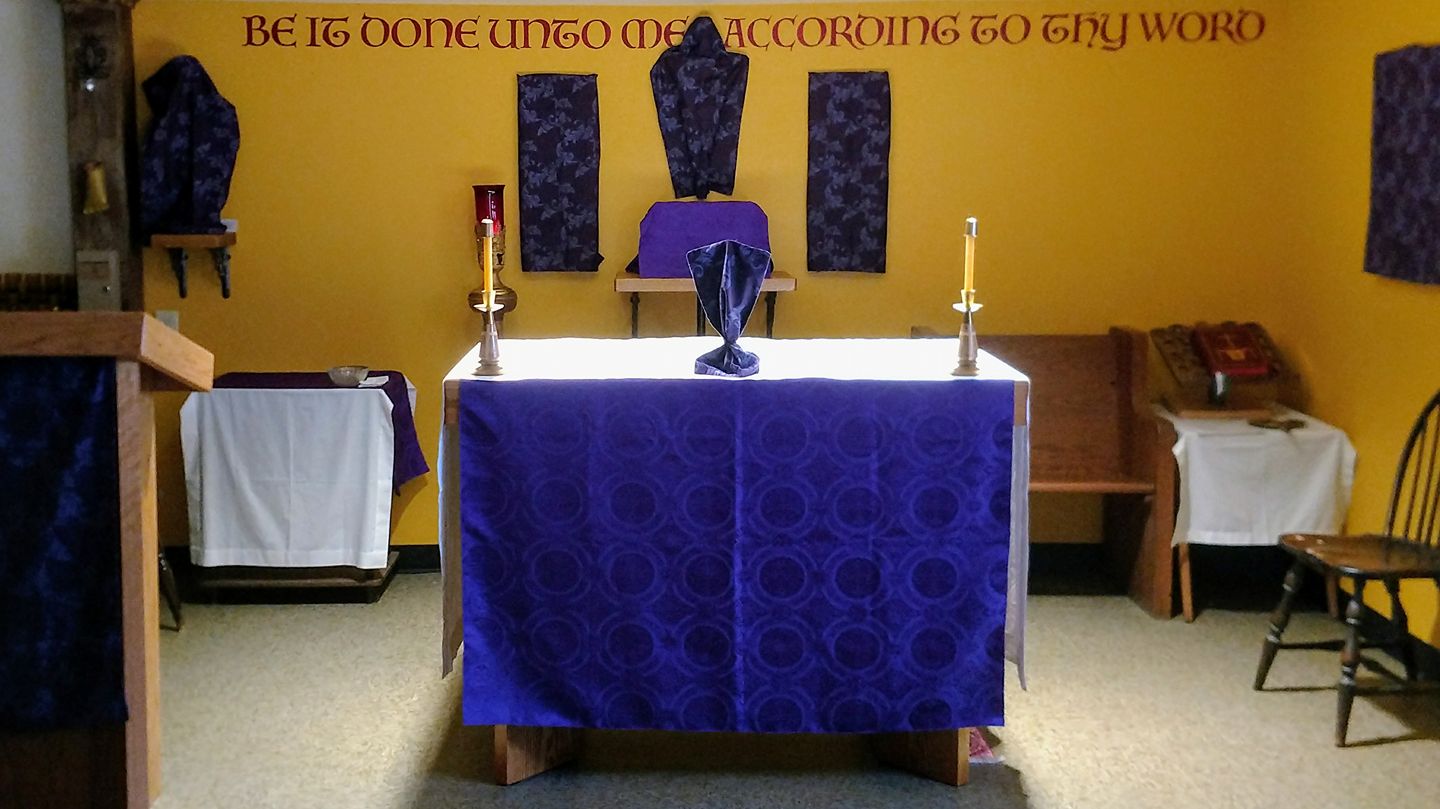Why Are the Statues Covered?
Depending on where you attend Mass, you may see the statues and images covered in the sanctuary beginning on the 5th Sunday of Lent. If you are not used to seeing this done, it may strike you as odd or even a bit unsettling. It is unsettling to see our beautiful statues and sacred images draped with shrouds like ghosts. The point is to unsettle us, as part of our Lenten preparation for Easter.
Covering sacred images during the latter part of Lent is an ancient tradition, but still a part of the modern Roman Rite. In the Roman Missal it says:
“In the Dioceses of the United States, the practice of covering crosses and images throughout the church from [the fifth] Sunday [of Lent] may be observed. Crosses remain covered until the end of the Celebration of the Lord’s Passion on Good Friday, but images remain covered until the beginning of the Easter Vigil.”
Roman Missal, 3rd ed., pg 256
But where did this tradition come from?
Hunger Cloth
Some suggest that the modern practice of covering images derives from the old German custom of hiding the entire altar from view with a cloth during Lent called the “Hunger Cloth.” This custom dates back at least to the ninth century as a way of doing penance by removing the sacred altar from our sight until the cloth was lowered during the reading of the Passion at the words “and the veil of the Temple was torn in two.”
Christ’s Passion makes our intimate union with God possible. During Lent, practices like the Hunger Cloth helped to remind the faithful of the great gift of this union by participating in a “fasting of the eyes” by hiding the sacred things of the church.
The custom of veiling sacred images during Lent spread. Some in the Church saw the practice as symbolic of the way Christ veiled his divinity for our sake during his Passion.
It was once a common custom to veil all sacred images in the church for the entire Lenten season, but by the 17th century the practice was restricted only to Passiontide, or the final part of Lent. Today, as indicated in the Roman Missal, it is optional from the 5th Sunday of Lent onward.
Something is Different
We continue the practice of veiling the statues and images in our chapel at Catholic Campus Ministry as a way not only of participating in an ancient tradition, but also as a visual reminder to us all that there is something different about this time of year.
When you enter a church and see the images covered, it is immediately striking. Something out of the ordinary is happening. It gets our attention. These last two weeks of Lent are meant to be a time of intense spiritual preparation for the celebration of the Easter season. Seeing the covered images reminds us of that in a visceral way.
The veils also add to our sense of anticipation and longing for Easter. We don’t want the images to be covered. Sacred images are beautiful and are meant to be seen. The coverings obscure their function. But it’s only temporary. The veils won’t be there forever.
This is a metaphor for our life on earth. We are living under a veil. Our true home is in heaven. Only there will the veil of mortality be removed and our true glory be revealed. This will only happen by our own participating in Christ’s passion, death and resurrection. We must make the Paschal Mystery our own.

